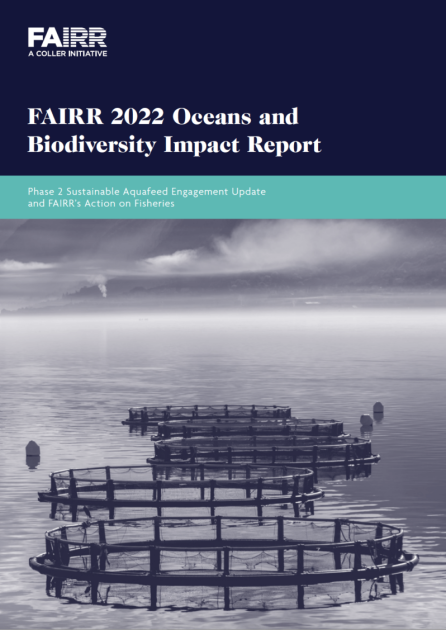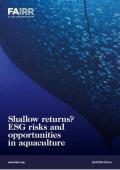Report Overview
This report is the latest update on FAIRR’s global investor engagement on sustainable aquaculture, which aims to encourage the world’s largest salmon companies to develop a strategic, science-based approach to diversifying feed ingredient sources. The ultimate goal of the engagement is to better manage ESG risks associated with sourcing wild forage fish and soy.
The report details highlights from FAIRR’s engagement on the climate and biodiversity risks in salmon feed supply chains and explains what investors can do to better engage the seafood sector on sustainability.
A primary focus of this report is feed. However, in other reports, FAIRR has identified disease, animal welfare, environmental degradation and community resistance as key impacts of and risks for the salmon industry. More detail, along with FAIRR’s outlook on the salmon industry, can be found in our Phase 1 report.
Report Highlights
Future growth of the industry is likely to be constrained if it continues its reliance on marine ingredients. Given the burden on global fisheries, alternative ingredients will provide the headroom for growth. Salmon producers must be investing now to avoid supply shock.
Companies are increasingly focused on reducing greenhouse gas emissions, and disclosures around emissions, but not focused on other risks related to biodiversity. None of the companies in this engagement was able to present investors with a holistic, nature-based approach to reducing its impact on the environment. The trade-offs between a feed basket’s carbon and biodiversity footprints are highly nuanced and complex.
Companies are relying heavily on certification to reassure investors of their sustainability, but they often make claims the certification bodies themselves do not endorse. For example, the standards in which certification is rooted do not necessarily cover every aspect of the biodiversity impacts associated with fishing methods such as trawling, dredging and lost gear.
More first movers are needed to unlock the potentially pivotal market for alternative ingredients. Companies currently differ in their views on which of these ingredients might be most suitable for salmon feed, and this lack of unity is creating a muddled market signal that is likely to slow the transition to sustainable feed.
Downloads
Public Report
Key insights
Market update
General analysis
Phase 2 summary
Investor insights
Full company analysis
Data tear-away sheet
Regional comparison
Best practice examples
Members’ Report
Key insights
Market update
General analysis
Phase 2 summary
Investor insights
Full company analysis
Data tear-away sheet
Regional comparison
Best practice examples


